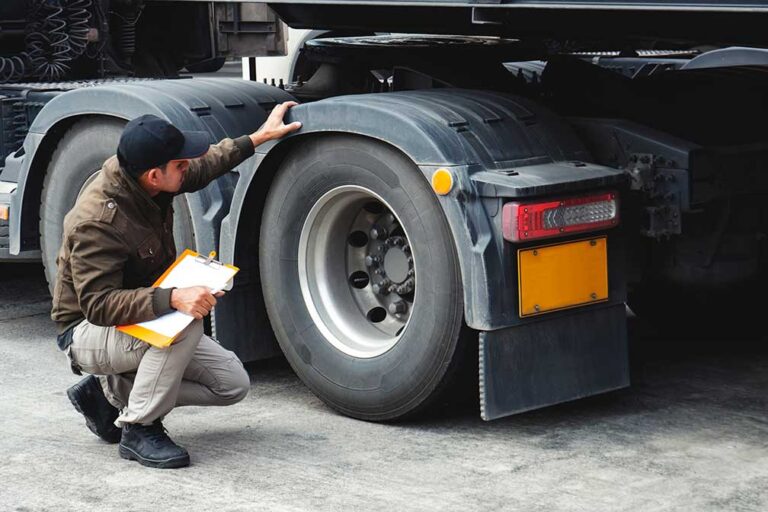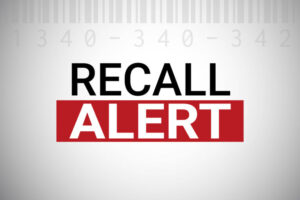There are plenty of days on the calendar that everyone looks forward to each year, such as birthdays, holidays and special events.
For most truck drivers, the Commercial Vehicle Safety Alliance’s (CVSA’s) International Roadcheck is NOT one of those days. For most drivers, getting pulled over for an inspection is like a visit to the dentist: The only “good” experience one can hope for is that nothing “bad” happens.
International Roadcheck 2025
The annual three-day inspection blitz begins Tuesday, May 13, and continues through Thursday, May 15. During this period, driver and vehicle inspections will be performed at weigh or inspection stations, temporary sites, and roadside inspections from mobile patrols.
Most inspections will be the CVSA’s Standard Level 1 inspection that examines driver operating requirements and the mechanical fitness of the vehicle.
Each year, thousands of drivers elect to park their trucks during the Roadcheck event, foregoing the revenue they could earn to avoid the risk of lost time and potential costs for repairs and fines from a failed inspection. Many drivers, however, view the event as an opportunity to pay closer attention to their qualifications and their vehicle’s condition, hoping to catch and correct potential safety issues before they become hazardous to others.
This year’s focus areas
Each year, CVSA announces a driver focus area and a vehicle focus area for the Roadcheck.
Drivers
This year, the driver focus will be on hours-of-service (HOS) regulations. Drivers can expect their record of duty status (RODS) to receive a thorough going-over to ensure compliance with driving hour limitations and rest requirements.
The driver focus area of HOS is an example of an area that is often neglected. It’s easy to forget to make notations on logging exceptions or corrections of incorrect entries. Some drivers may be confused about rules regarding use of the vehicle as a personal conveyance, or perhaps are unclear on which tasks must be logged “on-duty, not driving.”
With Roadcheck imminent, now is a good time to review regulations on these and other issues. In many cases, the Federal Motor Carrier Safety Administration (FMCSA) offers guidance for specific events that help clarify the rules.
In the U.S., driver inspections now include a check of the Drug & Alcohol Clearinghouse for the driver’s status. Drivers in an “ineligible” status will be shut down.
Vehicles
This year’s vehicle focus area will be tires. These won’t be the only inspection items, of course, but they’ll receive additional attention.
The vehicle focus area of tires is an easy one to pay attention to. A routine pre-trip inspection will quickly show you if the tires are leaking air or have damage, such as sidewall bulges or cuts, missing tread or tread separation.
Many drivers use a hammer or tire thumper to check the pressure, but for the Roadcheck event inspectors will be using a pressure gauge. Every driver should have one — and you should check each tire before the Roadcheck event.
Tires will be checked for tread depth, too. If tires are worn and close to replacement, it’s the wrong time to try to wring another 1,000 miles out of them.
Level 1 inspection
During a standard Level 1 inspection, enforcement officers check many areas other than RODS and tires.
It’s always a good idea to get the truck in for a thorough inspection prior to the event. Some vendors, like Travelcenters of America, have offered free inspections. The catch, of course, is that they’ll likely get repair business when they find discrepancies, but it’s helpful to have another set of eyes on the truck. This is especially true for areas that are difficult for the driver to inspect, such as brake wear and adjustment.
Roadcheck 2024 results
During last year’s Roadcheck, inspectors placed 23% of vehicles and 4.8% of drivers out of service (OOS) during the event. Nearly 45% of the vehicles placed OOS failed because of brake issues. Another 21% failed because of tires. In many cases, a simple pre-trip inspection would have caught defects and allowed for correction before being inspected.
On the driver side, nearly one-third (32.1%) of drivers who placed OOS failed because of HOS violations, including falsification. That number may not be surprising. What surprising, at least for this writer, is that just over one-fourth of the drivers placed OOS were cited for not having a valid commercial driver’s license (CDL).
It shouldn’t be difficult for a driver to make sure their CDL is in their possession and isn’t expired. However, many drivers haven’t memorized the expiration date of their CDL. It’s important to check from time to time.
Suspensions, which accounted for 5.1% of driver failures, might be easier to understand, since drivers may not be home to receive notifications mailed from their home state. Not having a medical card was the reason for another 11.2% of failures. Like CDL expiration dates, this is something that is easy to check.
Seatbelts are another issue. Last year, 535 drivers were in violation for not wearing seat belts. The FMCSA stated that 14% of commercial motor vehicle drivers don’t wear their safety belts.
Levels of inspection
During the 2024 International Roadcheck event, a total of 48,761 inspections were conducted. More than half — 29,342 (60.2%) — were Level I inspections. Level I is the most thorough inspection.
Another 10,098 (20.7%) of last year’s inspections were Level II, which is more of a “walk around” vehicle inspection that doesn’t involve the inspector getting under the vehicle.
Also last year, inspectors conducted 8,303 (17%) Level III inspections, which involve driver credentials and duty status. Level V inspections are vehicle-only the driver does not need to be present. There were 1,018 of these (2.1%) during last year’s Roadcheck event.
Successful navigation of the annual CVSA International Roadcheck is no secret. It’s an opportunity for drivers to review their qualifications and make sure their CDL, medical card and other documents are current and valid. You should also check RODS to make sure they’re up to date and all corrections have been made.
If it’s been a while since a thorough inspection of the vehicle has been made, get it done. This includes an in-depth inspection of the brakes for function and adjustment. Particular attention should be paid to pre-trip inspections in the days up to and including the International Roadcheck event.
While no driver enjoys the prospect of being inspected, everyone benefits from making sure the commercial vehicles — and drivers — that travel the roads of North America are operated as safely as possible. Safety-minded drivers who prepare themselves and their equipment will get the most from International Roadcheck.
Cliff Abbott is an experienced commercial vehicle driver and owner-operator who still holds a CDL in his home state of Alabama. In nearly 40 years in trucking, he’s been an instructor and trainer and has managed safety and recruiting operations for several carriers. Having never lost his love of the road, Cliff has written a book and hundreds of songs and has been writing for The Trucker for more than a decade.














